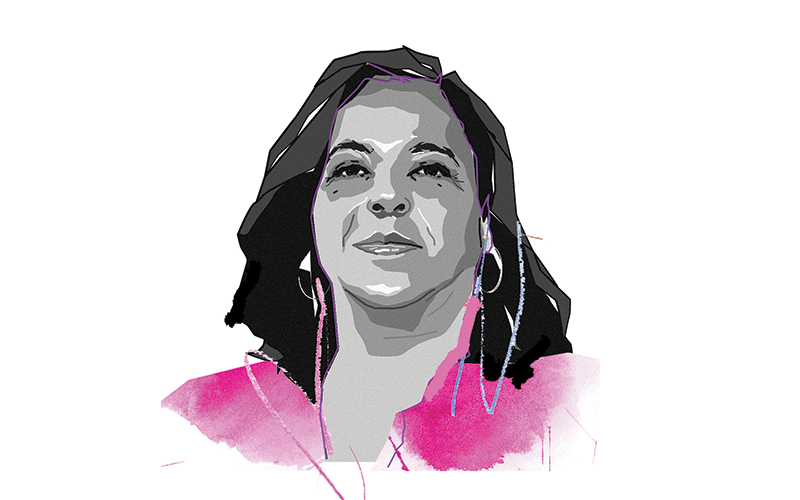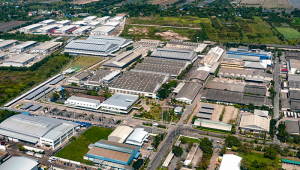
Liverpool is defined by its people. The Liverpool City Plan sets out its vision for neighbourhoods as: ‘All residents live in safe, inclusive and welcoming neighbourhoods, where people choose and aspire to live, raise their families and grow old. Public services are aligned with local need to reduce inequalities within the city.’
The drive to reduce inequalities in Liverpool has led to a radical rethink of our neighbourhood model. A total of 48% of residents and 57% of children in Liverpool live in neighbourhoods that are among the 10% of most deprived areas in England, while life expectancy for men and women in the city is 3.3 years less than the English average.
Stark disparities within the city highlight that those living in one of our more affluent wards (Church) can expect to live 12.7 years longer than those in one of our more deprived wards (Everton).
Neighbourhoods are the building blocks of city-making. In Liverpool, we know that when we get things right on a neighbourhood level, people, place and economy all benefit at a fundamental level – creating long-lasting, positive change, increasing opportunity and reducing inequality.
Counting the cost
Like many councils across the country, our budget has been severely eroded over the past 12 years and we now have a £73m gap to close. A study by the Institute for Government think-tank found poorer areas have been disproportionally hit by a combination of cuts to neighbourhood services, such as parks, libraries, refuse collection services and children’s centres. It concluded that this has left many English councils ‘hollowed out’ since 2010.
Cutting services in neighbourhoods is very visible to residents and does not breed a sense of pride and ownership in a community. Instead, it leads to frustration and a disconnect with the council and inertia among residents, rather than empowerment. Sadly, we have been left with very little choice.
We knew we had to find a way to work more innovatively and creatively to support our neighbourhoods. We had to do better, albeit with less money and fewer resources. It is a huge challenge – but as a city we don’t shy away from challenges and are constantly finding new and more effective ways of working.
Partnership working and a more integrated approach is absolutely key as we move into our new neighbourhood model. What sets Liverpool apart from many other cities is our social solidarity, and we have several community organisations across the city that want to make a difference and support the council in a lot of our grassroots work.
For example, budget cuts have meant that we are having to scale back on cutting grass verges in our neighbourhoods. Through strong partnership working with local ‘wildflowering’ organisation Scouse Flowerhouse, we will now save costs on grass cutting, increase biodiversity and expand local green skills.
Scouse Flowerhouse will be able to draw down external funding because of this opportunity and deliver training to council officers on how to maintain wildflower patches. This will upskill our staff with those skills needed for future green jobs and is a great example of how a collaborative, innovative, joined-up approach can turn a negative budget cut into a positive. However, this would not be possible without ongoing engagement with our third-sector organisations and is the key to our future way of working.
Local government does not have the resources it once did. However, our local third sectors are innovative, dynamic and deep-rooted in the communities we support. Rethinking our neighbourhoods and championing big ideas must be led by those grassroot community organisations – and, as local councils, we should support them.
Organising is power
The spirit of community is clear in the many services our community organisations deliver to support residents with entrenched social issues, food poverty, social isolation and a lack of opportunities. We have recently adopted a community asset transfer policy. This policy sets out a process for us to transfer our buildings and land to community groups for less than market value, based on the social benefit that these groups can bring to the local community.
This is another example of using our values and strong partnership working to produce outcomes that benefit our residents. While our difficult budget situation forces us to look at co-locating services, changing how we deliver those services is key. We recognise that our local third sector can help us deliver services, and if they have access to building, then they can draw down vitally important external funding.
Central to our new neighbourhood model will be ‘15-minute neighbourhoods’. This approach drills down on the unique features and needs of each neighbourhood, with residents having access to everything they need within 15 minutes of where they live. As a starting point, we will be mapping the physical buildings in each neighbourhood to see where the gaps are – from libraries to children’s centres. We will then move on to looking at services.
These 15-minute neighbourhoods have the potential to transform places into connected, self-sufficient neighbourhoods, where communities have ownership and are involved in decision-making. We want to encourage participation, not consultation, so residents are empowered to ask ‘What can I do?’ or ‘What action can we take?’ in community conversations. Our aspiration is to move to a participatory budgetary model, and we will encourage communities to use their strengths, resources, skills and expertise to help them thrive.
‘The spirit of community is clear in the many services our community organisations deliver’
Mobilising for many
Encouraging community ownership has proved successful. Traditionally, Liverpool’s alleyways have been problematic, with litter and vermin issues. The city has 22,000 properties adjacent to 4ft alleyways and 38,000 properties adjacent to 9ft alleyways. The existing designs of properties and alleyways from the early 1900s did not provide for the waste storage and separation that we need today. Waste was therefore uncontained and present throughout the week, in poor condition and infested with rats, flies and smells.
One community group that sprung up in response to this was ‘Anfield Alley Angels’. Mobilised by a local resident with a desire to clean up his area, he recruited a team of seven people to deliver a weekly deep-clean of their area, litter picking, sweeping alleyways, weeding and even picking up their neighbours’ dog dirt.
The group has also educated the local community by handing out information on recycling. This has led to behavioural change, with Your Housing Group figures reporting recycling figures in Anfield village to be up by nearly 80%. It is clear that when local people invest their time and effort into the neighbourhood, it builds a relationship of community ownership and trust.
Our revolutionary underground bins scheme is also transforming our neighbourhoods and improving quality of life for our residents. These super-bins can hold up to 5,000 litres of waste below street-level, equating to a week’s worth of rubbish from 20 houses. They tackle illegal dumping, vermin problems and litter. Unlike weekly collections, our residents can use these bins daily and, once full, the bins alert the waste collection company to send a vehicle to collect the rubbish. This has been so successful, it has made national news, with plans to roll the scheme out in other parts of the country.
While we have faced serious cuts to our neighbourhood budget, there are areas of funding where we believe it would be counterintuitive to cut. For example, our councillors are allocated an amount of money, dependent on their ward size and other factors, which they can use to fund projects that qualify and pass due diligence. We call this funding the Mayoral Neighbourhood Fund. A good example of how MNF is used is the funding of clean-up days, skips and litter-picking equipment that will help communities reclaim problem spots in their neighbourhood. We have seen this in areas with alleyways where councillors have funded a clean-up day, painting, planting and clearing out rubbish. This one-off MNF spend has the potential to bring the community together and end a continuous strain on our neighbourhood services through repeatedly removing rubbish.
‘When local people invest their time and effort into the neighbourhood, it builds a relationship of community ownership and trust’
Life after Covid-19
Empowered communities were seen in response to the Covid-19 pandemic, when we developed a community champions programme. This was initially developed to increase vaccine uptake among hard-to-reach communities. The aim was to support a range of activities, including: developing engagement strategies and outreach work in the most at-risk places and communities; supporting and empowering communities through new and existing networks and grassroots organisations or ‘champions’ from affected communities; and working through voluntary and community groups and other national or local organisations that specialise in working with communities to harness local expertise and increase vaccine equity by addressing local barriers to access.
It was extended by 12 months in 2022, and community champions continue to find practical solutions and use communication and engagement activities, tailored to meet the needs of local communities, to make a real difference to the promotion and uptake of vaccines. In addition, their remit has expanded to supporting reduction of wider health inequalities within communities. This includes mental health and hardship to reflect the impact of Covid-19 on local communities and the current cost of living crisis. Community champions work closely with Citizens Advice and the Healthy Homes team within the local authority.
So, as a council, we will continue innovating and making things better. We plan to continue transforming our neighbourhoods through socially useful regeneration of new and refurbished housing, public realm improvement and retail offers that will create sustainable employment opportunities, improve health and wellbeing and support community development.
The foundation of this will be meaningful community engagement and consultation, with the underpinning goal of building community capacity and empowerment and helping residents to help themselves.



















